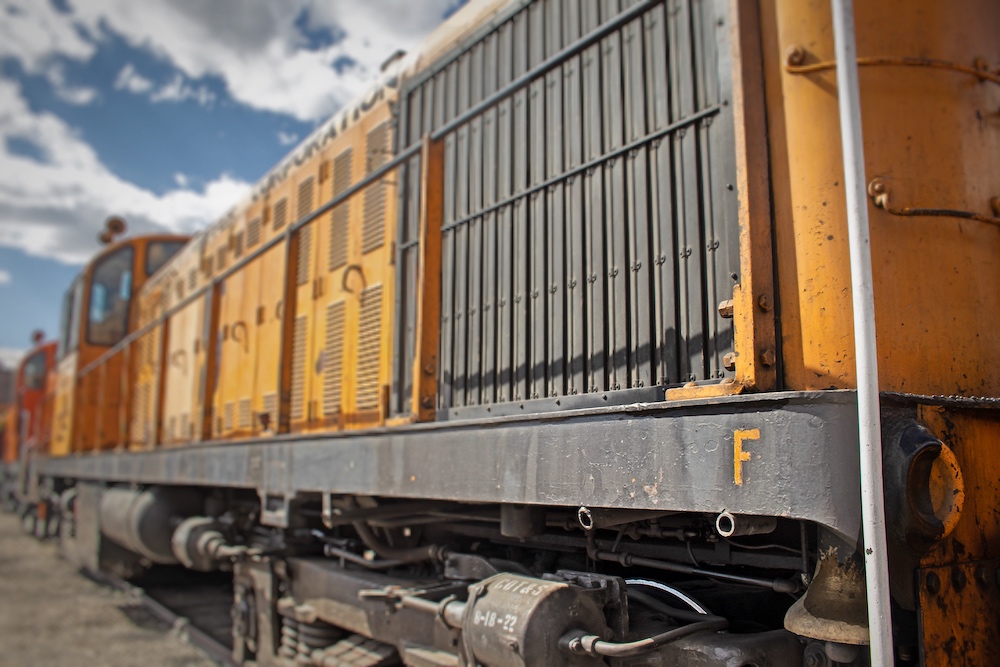
If you look closely at a diesel locomotive, you’ll see the letter “F” stenciled near the stairs. As obvious as it seems, the “F” stands for Front, and it’s required under the Railroad Locomotive Safety Standards section of the Code of Federal Regulations (CFR).
Title 49 CFR Part 229.11 reads, “The letter “F” shall be legibly shown on each side of every locomotive near the end which for identification purposes will be known as the front end.”
For most locomotives, the front end is obvious. So, is this an example of regulators gone wild? (After all, the same CFR sternly warns that each lead locomotive must be inspected before each and every departure to “insure they are equipped with toilet paper in sufficient quantity to meet employee needs.”)
This accompanying photo shows why this regulation was necessary. While nearly all diesel locomotives run short-hood-forward, the “F” in the photographed engine is on the long hood of this Kennecott Copper Alco RS-2 locomotive belonging to the Nevada Northern Ry. This locomotive is set-up to normally run long-hood forward — a practice that provided extra collision protection for the crew at the cost of making it a little more difficult for them to see where they were going on a curvy patch of railroad.
With different railroads having different ideas of which end of a diesel should be in front, that little F on the frame can become a matter of life or death.
For example, the lettering gives switchmen working on the ground an idea of how an engineer will respond to a “go forward” or “back up” signal — in an industry as dangerous as railroading you never want to guess.
The F also provides a handy point of reference (“The front truck is cracked”), it indicates the preferred direction a locomotive should point when it leads a train, and it lets the engineer know which direction an unfamiliar locomotive will move when he sets the reverser lever on the control stand “forward” or “reverse.”
Incidentally, the same Federal locomotive identification regulation that mandates F for front also requires that “The locomotive number shall be displayed in clearly legible numbers on each side of each locomotive.” Interestingly, the code doesn’t require that a locomotive display the name of the owning railroad.
Steam locomotives are exempt from many of the requirements found in this section of the Federal Code, as are industrial switchers and urban commuter railroads.
If you were to draw a line from coupler to coupler the length of a railcar, one side will be the left and the other the right. Knowing which side is which is just as important as knowing the front and back of a locomotive. After all, it’s not uncommon for shipping instructions to include a note such as “Unload right side first.” Knowing left from right starts with knowing your As and Bs.
Cars have an A and a B end. The B stands for “brake” and is the location of the hand brake. (The letter A doesn’t stand for anything; it just means “not the B end.”)
To find right and left, imagine that you’re standing at the B end of a car and facing the A end. The left side of the car is on your left and the right side is on your right.
Some railroads stenciled a small L or R near the doors of their boxcars.






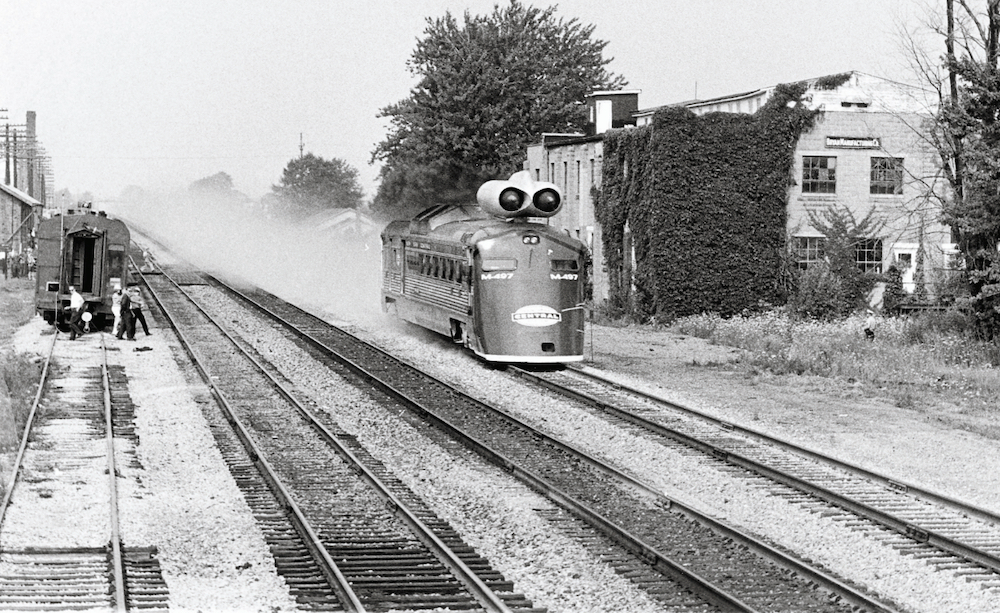
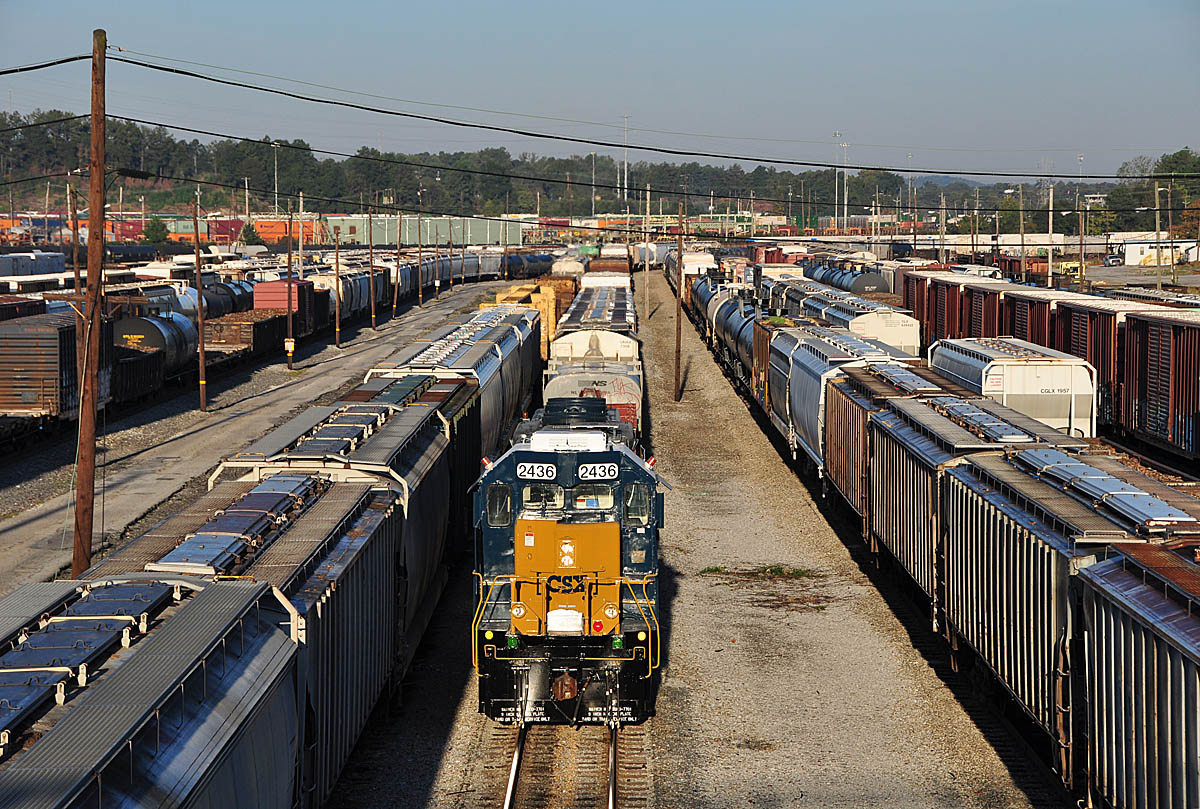
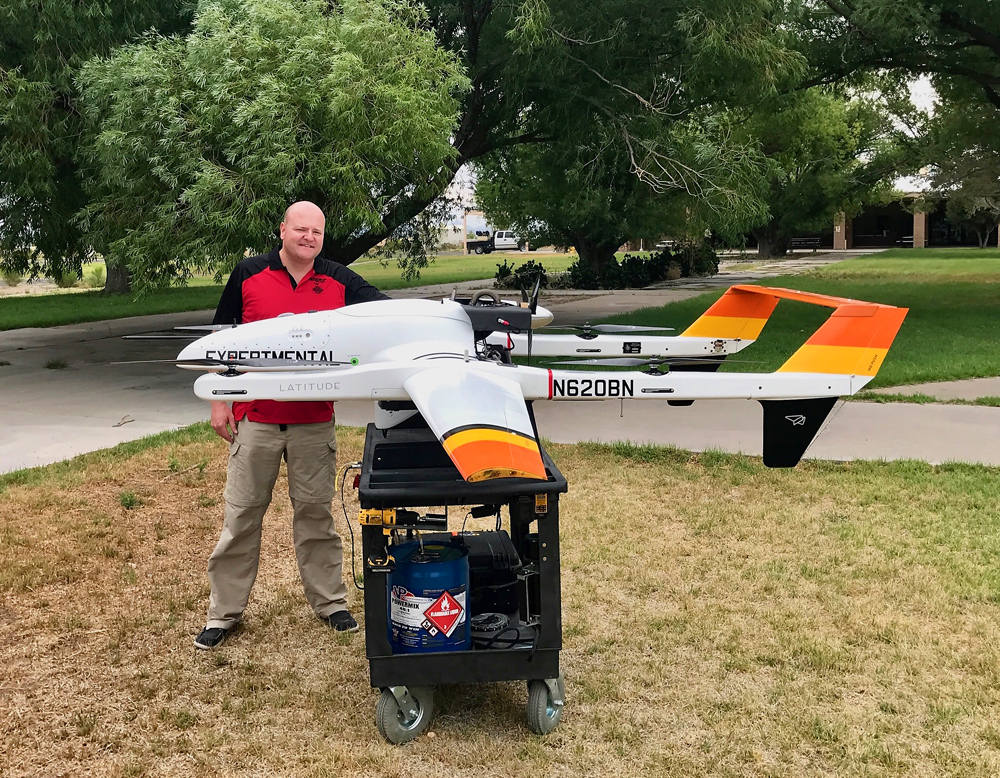
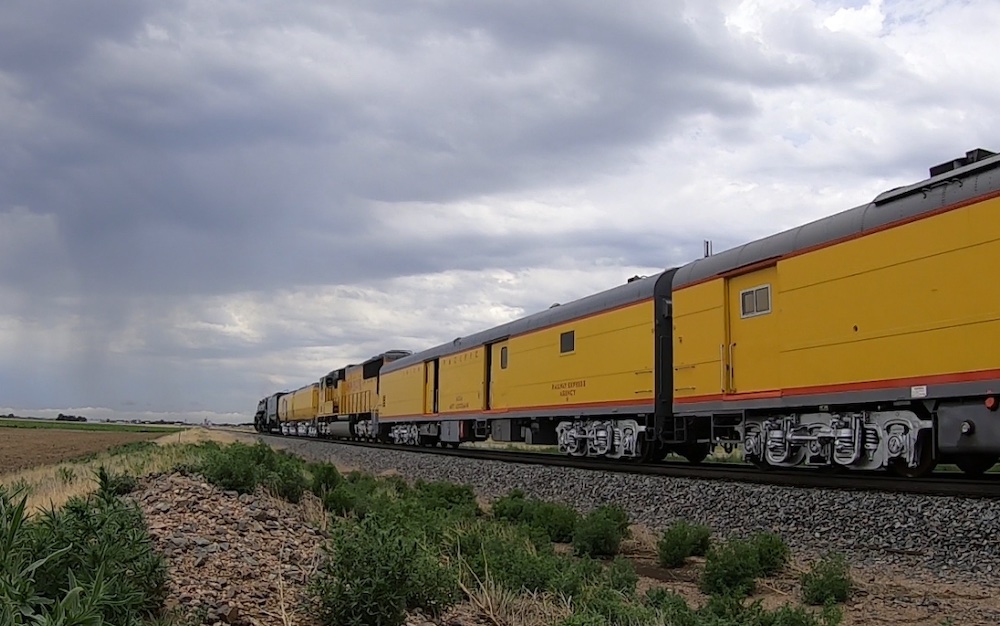




I posted a question about this a while ago on Ask Trains. I am glad you posted this article. It supplements the answer I got from Ask Trains. What fascinated me was I always saw the F from outside the train, so it seemed like it was purely put there for the benefit of those not on the locomotive. And yet it was visible from only the side. I could see the importance of knowing what direction a train was going if it signaled it was moving forward and I was on the tracks in front of it, but not if I was along side the train. I never thought about how the F would be seen and be useful to all the different people with different jobs working around the locomotive, especially people who were unfamiliar with the locomotive.
in the late 70’s as a management trainee working strike duty in the Kansas City area I learned the importance of the “F” marking when I gave a lantern hand signal to move ahead to an engineer on a switch engine I was working with and it started moving away from me – only then did I realize I needed to ask the engineer to back up not move forward as the “F” or front of the engine (which was not clear to me as a green switch person) was facing away from me – from then on I appreciated the “F” stencil whenever I saw it on an engine
R Dorer – former MoPac employee